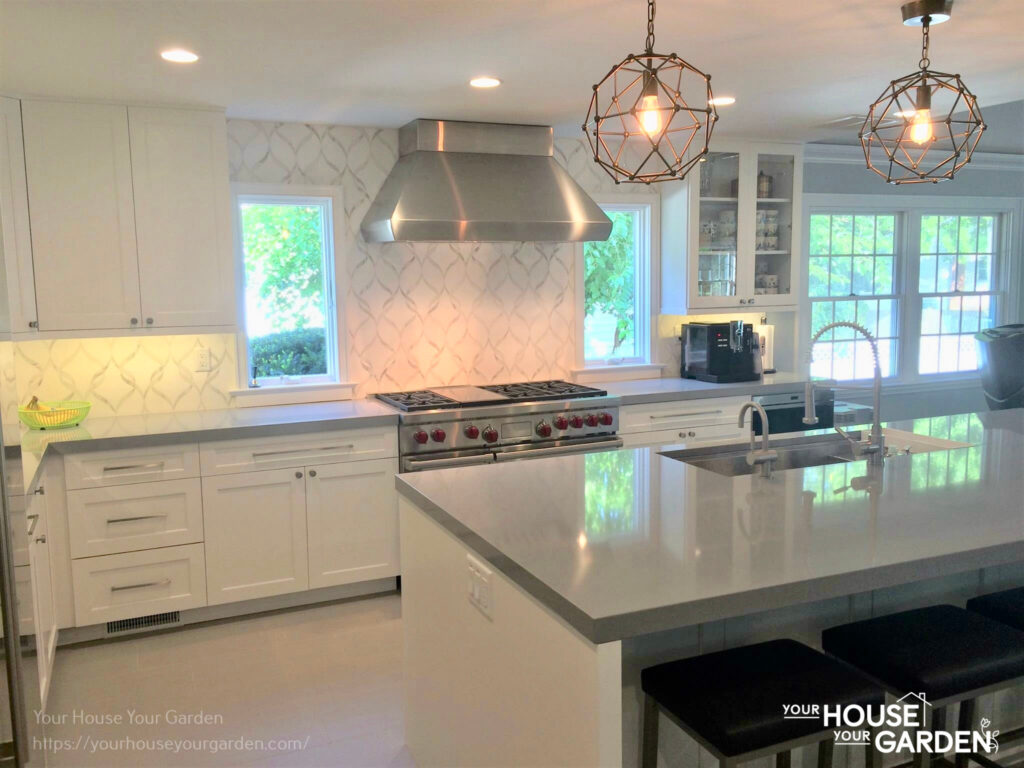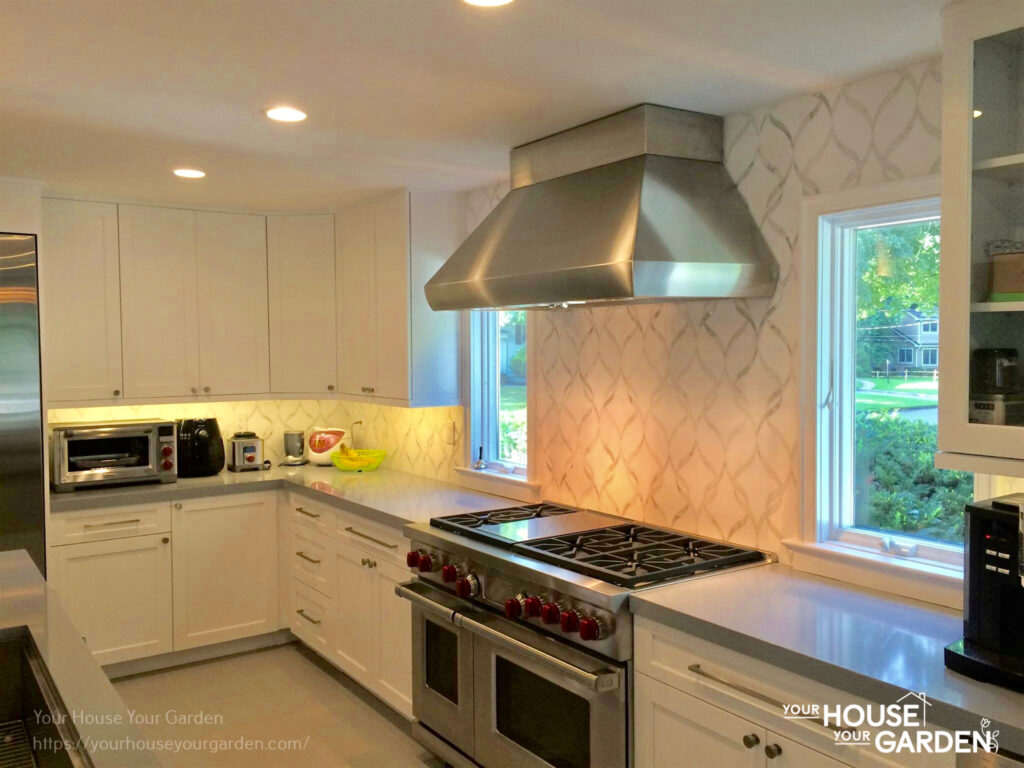Laminate Countertops
Home » Home Remodeling » Kitchen Countertops » Laminate Countertops

Kitchen remodeling is a costly investment and you may be on the hunt for more affordable countertop materials. While granite or butcher block countertops have beauty, the retail prices of these materials can get quite high. That’s why you should consider laminate countertops for your kitchen or bathrooms.
Laminate is a popular material for kitchen countertops because it is manufactured in a spectrum of colors, patterns, textures, and finishes to complement all interior styles. This material is also cost-efficient and easy to work with for homeowners with uniquely-shaped countertops. Here’s our guide to laminate countertops.
What is Laminate?
A laminate sheet is made by combining resin-coated paper that is put together under immense pressure and high heat. The top layer of this material is colored and laminated to a piece of particleboard which means that the laminate sheet is more durable, water-resistant, budget-friendly, and easy to maintain.


The Benefits of Laminate
Laminate can be advantageous as a kitchen or bathroom countertop because it is:
Affordable
If you have gone through a home improvement website and magazine article for inspiration for your kitchen or bathroom remodeling project, you may have already noticed that laminate has a lower price point compared to other countertop materials. Just because you are going to upgrade the look and feel of a space doesn’t mean that you have narrow choices for colors, patterns, or finishes.
Versatile
Laminate, regardless of the brand or store you purchase it from, goes through a manufacturing process that makes it very versatile as a material. Homeowners often choose laminate over materials like granite because it can still be shaped to fit any counter but be a fraction of the price.
Easy to Install
For a renovation or remodeling project, the installation of this material onto countertops is easy and can be done by a professional or by yourself.
Wide Range
While availability will vary in stores, there is usually a wide range of laminate sheets that you can choose from. If there is a specific type of edge profile, pattern, finish, or color you would like for the bathroom or kitchen countertops, you can connect with a brand or select products in stores. Create cohesion in a space by matching the bath tiles or kitchen cabinets with your countertop or select laminate countertops that add depth and interest to a room.
Low-maintenance
With laminate countertops, you don’t have to worry about purchasing special cleaning products. Just like how you would clean up backsplash tiles, use a kitchen rag to wipe away the crumbs leftover from eating cookies, or use soapy water for liquid stains.

How to Pick a Laminate Countertop
When narrowing down which laminate countertop to purchase, here are some factors you should take note of:
Color
Any brand you purchase your laminate countertops from will have light options, dark ones, and everything in between. All you have to do is decide what colors will tie your kitchen or bathroom together and whether or not the prices are within budget.
Of course, you can choose a shade that will make your countertops the center of attention. For instance, a minimalist kitchen that has a greyscale palette can use a pop of color with bright countertops and cabinets.
Edge Profile
Another factor to consider is the edge profile that you would like for your countertops. Typically, this will affect the laminate’s pricing, repair process, and professional installation rate. The most popular decorative edges include:
Beveled: A beveled edge adds depth and looks clean-cut on countertops. This classic edge highlights the pattern of laminate.
Cascade: A cascade edge will connect a straight-edged base and waterfall roll for a seamless countertop.
Crescent: A crescent edge, you may notice, has curves both at the top and bottom.
Finish
It will also be helpful for your interior designer or manufacturer if you decide on the type of finish you prefer for your countertops. Products will usually have a finish included in the list below:
Matte
Gloss
Suede
Woodgrain
Stone
Crystal
Quarry
A design tip for busier kitchens is to choose a laminate countertop that is lighter in color when you can. Laminate can scratch and these imperfections are accentuated when the countertop is a dark color. If your space will be incomplete without a dark counter, then opt for a laminate that has a busy pattern to disguise scratches.
Manufacturers
When shopping for laminates, choose from the top brands in the industry:
Formica: As the manufacturer of the oldest laminate counter material available, Formica is a household name in the industry. Today, Formica can ship out laminate countertops that mimic how metal, leather, or wood looks.
Wilsonart: Another popular choice, Wilsonart, offers durable laminate countertops that have depth and a variety of finishes that complement different interiors.
Installation
If you do not have access to professional installation services or simply want to save money for other areas of your remodeling project, you can install laminate kitchen countertops by yourself.

FAQs on Laminate Countertops
Is laminate a good choice for countertops?
Yes, laminate is a cost-effective, low-maintenance option for countertops that can suit different interiors.
How long will laminate countertops last?
A laminate countertop can last for 10 years to 20 years with proper care and maintenance.
How much do laminate counters cost?
A laminate countertop will cost you $20 to $65 per square foot. The installation will cost you another $40 to $80 per square foot.
What are the downsides of having a laminate countertop?
While laminates are a great choice, they can scratch easily, chip, and are susceptible to burn marks from hot pots and pans. When you have a laminate countertop, do not use it as a cutting board, and be mindful of where you put hot cookware.

